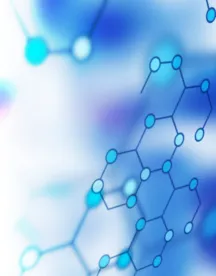A few weeks ago I joined Kathleen Fonda, Ph.D., J.D., Senior Legal Advisor in the USPTO’s Office of Patent Legal Administration, and Gary Ganzi, J.D., Senior Counsel and Head of Intellectual Property for Evoqua Water Technologies, on an IPO Chat Channel program on the use of Rule 130 declarations to disqualify prior art under the America Invents Act (AIA). Even though I played the role of outside counsel “expert” on the topic, there were a few things about Rule 130 declarations I had forgotten since I first studied the USPTO’s rules and guidelines 5 years ago.
The AIA Statute At Issue
Rule 130 declarations are the mechanism by which applicants can invoke many of the prior art exceptions embodied in the AIA version of 35 USC § 102(b):
(b)Exceptions.—
(1)Disclosures made 1 year or less before the effective filing date of the claimed invention.—A disclosure made 1 year or less before the effective filing date of a claimed invention shall not be prior art to the claimed invention under subsection (a)(1) if—
(A) the disclosure was made by the inventor or joint inventor or by another who obtained the subject matter disclosed directly or indirectly from the inventor or a joint inventor; or
(B) the subject matter disclosed had, before such disclosure, been publicly disclosed by the inventor or a joint inventor or another who obtained the subject matter disclosed directly or indirectly from the inventor or a joint inventor.
(2)Disclosures appearing in applications and patents.—A disclosure shall not be prior art to a claimed invention under subsection (a)(2) if—
(A) the subject matter disclosed was obtained directly or indirectly from the inventor or a joint inventor;
(B) the subject matter disclosed had, before such subject matter was effectively filed under subsection (a)(2), been publicly disclosed by the inventor or a joint inventor or another who obtained the subject matter disclosed directly or indirectly from the inventor or a joint inventor; or
(C) the subject matter disclosed and the claimed invention, not later than the effective filing date of the claimed invention, were owned by the same person or subject to an obligation of assignment to the same person.
Rule 130 Declarations
37 CFR § 1.130 is titled “Affidavit or declaration of attribution or prior public disclosure under the Leahy-Smith America Invents Act,” and provides in part:
(a) Affidavit or declaration of attribution. When any claim of an application or a patent under reexamination is rejected, the applicant or patent owner may submit an appropriate affidavit or declaration to disqualify a disclosure as prior art by establishing that the disclosure was made by the inventor or a joint inventor, or the subject matter disclosed was obtained directly or indirectly from the inventor or a joint inventor.
(b) Affidavit or declaration of prior public disclosure. When any claim of an application or a patent under reexamination is rejected, the applicant or patent owner may submit an appropriate affidavit or declaration to disqualify a disclosure as prior art by establishing that the subject matter disclosed had, before such disclosure was made or before such subject matter was effectively filed, been publicly disclosed by the inventor or a joint inventor or another who obtained the subject matter disclosed directly or indirectly from the inventor or a joint inventor. An affidavit or declaration under this paragraph must identify the subject matter publicly disclosed and provide the date such subject matter was publicly disclosed by the inventor or a joint inventor or another who obtained the subject matter disclosed directly or indirectly from the inventor or a joint inventor.
(1) If the subject matter publicly disclosed on that date was in a printed publication, the affidavit or declaration must be accompanied by a copy of the printed publication.
(2) If the subject matter publicly disclosed on that date was not in a printed publication, the affidavit or declaration must describe the subject matter with sufficient detail and particularity to determine what subject matter had been publicly disclosed on that date by the inventor or a joint inventor or another who obtained the subject matter disclosed directly or indirectly from the inventor or a joint inventor.
The First Thing To Know About Rule 130 Declarations
The different paragraphs of Rule 130 map to different paragraphs of § 102. This means that in order to disqualify prior art under § 102(b)(1)(a) or § 102(b)(2)(a), the Rule 130 declaration should comply with 37 CFR § 1.130(a), while in order to disqualify prior art under § 102(b)(1)(b) or § 102(b)(2)(b), the Rule 130 declaration should comply with 37 CFR § 1.130(b). Rule 130 Declarations are not pertinent to the joint ownership exception of § 102(b)(2)(C).
The Second Thing To Know About Rule 130 Declarations
If an executed inventors oath or declaration has not yet been filed, the Rule 130 declaration must state that the inventor(s) named on the application invented the subject matter at issue. The statement of inventorship in an Application Data Sheet is not sufficient.
The Third Thing To Know About Rule 130 Declarations
The sufficiency of a Rule 130 declaration is evaluated by a primary examiner under the preponderance of evidence standard. The USPTO does not require statements from the author(s) of the reference being disqualified, but the Rule 130 declaration must provide a reasonable explanation of the circumstances that satisfy the conditions for disqualification and can include supporting evidence when available.
One More Thing To Know About Rule 130 Declarations
There actually are a lot more things to know about Rule 130 declarations, but one more interesting thing that Dr. Fonda noted is that if a Rule 130(b) declaration was filed during prosecution, the USPTO will include a note to that effect on the face of the printed patent. (You can see an example here.) The Rule 130(b) notice will alert examiners (and the public) that the prosecution history may contain evidence of a public disclosure of the invention earlier than the filing date.




 />i
/>i

